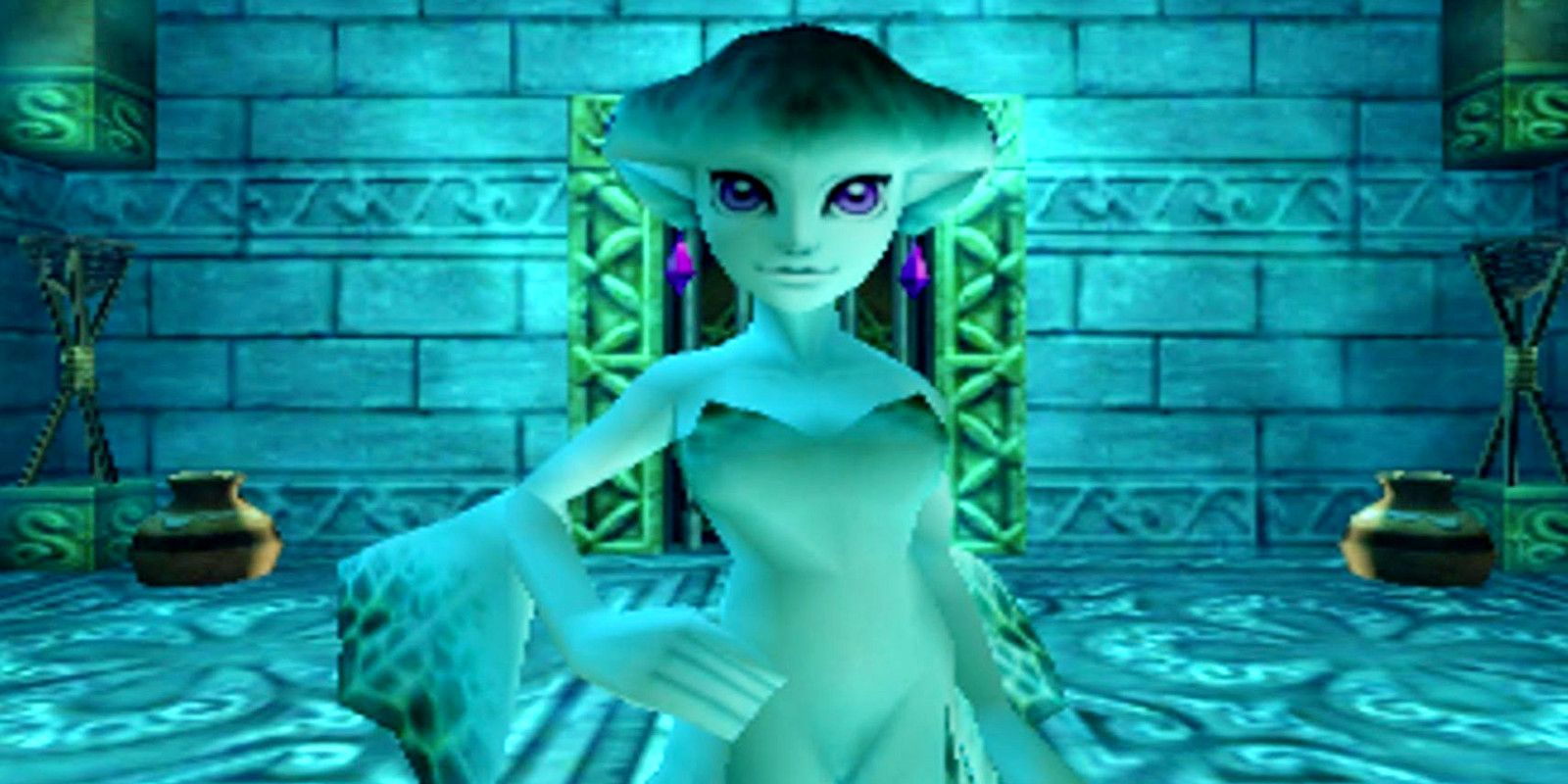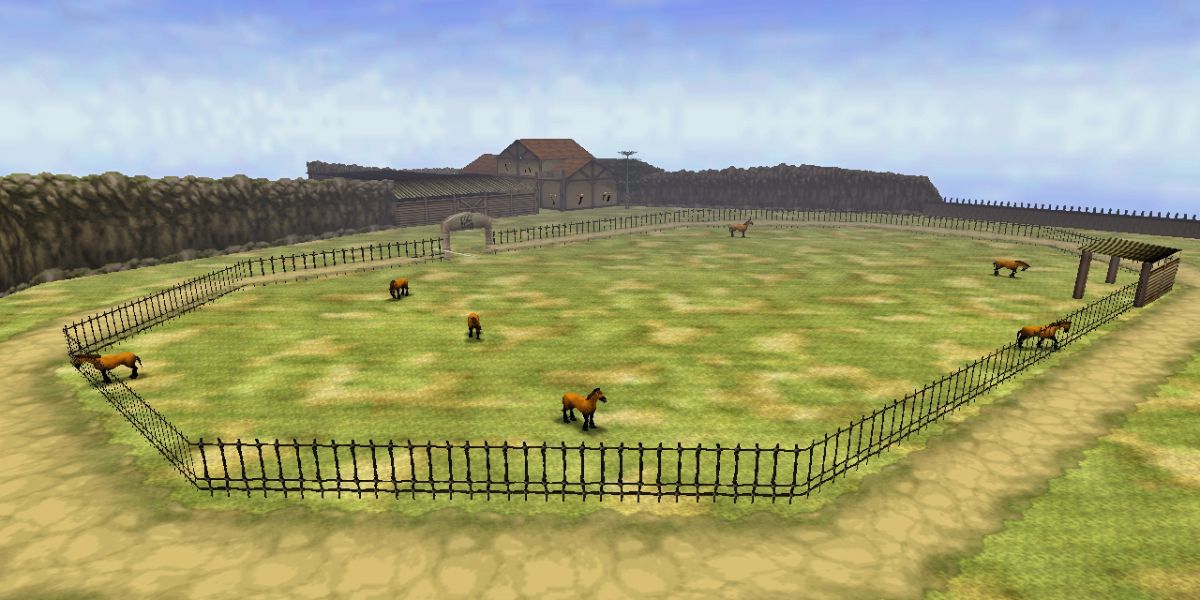The Legend of Zelda: Breath of the Wild may be one of the best games to come out in the last twenty years, but it can still learn a lot from its iconic predecessor, Ocarina of Time. When the Nintendo 64 title came out in 1998, it changed the adventure genre and the video game world forever. Now that BOTW 2 is on the horizon, Ocarina of Time can continue to serve as a touchstone for the Legend of Zelda series by showing what it did better than the original BOTW.
This is not to say the 2017 Nintendo Switch launch title pales in comparison to Ocarina of Time, of course. BOTW is one of the most successful and coveted games Nintendo has ever released. Still, the game does have polarizing aspects to it, especially for long time fans of the Legend of Zelda series. Between its very loose storytelling approach and the fact that most of the important NPCs are dead before the game even starts resulted in it being a refreshing experience for some and an unwelcome change for others.
Ocarina of Time can thus provide some pointers for Nintendo by showing what it did better than BOTW. The N64 title has a lot to offer that is surprisingly missing in the much newer Nintendo Switch game. And if BOTW 2 were to incorportate Ocarina of Time‘s traits into a BOTW-styled game, it would potentially be the best installment of series.
Ocarina Of Time’s Dungeons Outclass BOTW’s Divine Beasts

When it comes to dungeons in Ocarina of Time and BOTW, it is clear the former beats the latter. The dungeons of Ocarina of Time are iconic to the point that their names are memorized by those who have gone through them, which is an especially impressive feat when considering that some of them have simple names like “Fire Temple” and “Ice Cavern.” But what really makes these dungeons such a strong point in the Zelda series as a whole is that they offer plenty of variety in design, pose genuine difficulty, and require players to implement different strategies. Some of the designs are genuinely startling in their creativity, namely Inside Jabu Jabu’s Belly, which takes place in a character’s nasty insides. The Water Temple’s difficulty in Ocarina of Time precedes itself, of course. Additionally, specific items (like the Lens of Truth in the Shadow Temple) and strategies (such as switching between Young Link and Adult Link in the Spirit Temple) necessary to beat certain dungeons keeps the gameplay fresh through each play through of Ocarina of Time.
On the other hand, BOTW doesn’t actually have real dungeons. Instead, it has the Four Divine Beasts, all of which are mechanical creatures that were designed to keep Calamity Ganon at bay but were ultimately possessed by his Blights during the Second Great Calamity. A positive note about the Divine Beasts is that they provide BOTW a sort of present-day plot. Much of Breath of the Wild‘s story is fragmented and memory-based, but the process of reclaiming the Divine Beasts adds a secondary plot on top Link’s memories that grants the game a semi-cohesive narrative. The dungeons can also be incredibly cinematic, especially the chasing sequence of Divine Beast Vah Naboris. However, the Divine Beasts are essentially the exact same in terms of art design. This is in part due to BOTW‘s story, but nevertheless, having the same look to each dungeon can make them feel underwhelming, especially because BOTW has such a beautiful aesthetic. Even the process of taming the Divine Beasts before entering them can be repetitive. Though chasing Divine Beast Vah Naboris looks amazing, the same process of shooting arrows while mounted is repeated in another Breath of the Wild Divine Beast fight against Vah Ruta.
But perhaps the worst part of the Divine Beasts are the bosses. The Ganon Blights do not vary enough in design or fighting style to make them interesting. Again, Vah Naboris’s Thunderblight is a high point because of its teleportation ability forcing players to truly use their environment’s puzzle design. Generally speaking, though, each of the Ganon Blights is easy to take out with the same strategies and weapons, especially because their eyes are such weak points. In comparison, Ocarina of Time‘s dungeons often have sub and major bosses, most of whom are unique. Some of Ocarina of Time’s bosses stand out as the Zelda series’ best (namely the Shadow Temple’s Dead Hand). Thus, in nearly every quality that makes a dungeon a dungeon in the Zelda series, Ocarina of Time outclasses BOTW.
Ocarina of Time Has A Better Variety Of Side Quests Than BOTW

When it comes to side quests and mini games, Ocarina of Time has BOTW beat. Though the N64 classic is over twenty years old, its selection of side quests is more robust and fun. Just at Lon Lon Ranch, there are a variety of side quests that involve Link learning songs from Malon as well as horse races and obstacle courses, and there are several locations in the game that have optional quests springboard off of one another in this way. These side quests and mini games in Ocarina of Time offered its best moments, and not only serve to entertain players but also make the world of Hyrule feel more alive and the people within it more like genuine characters.
In contrast, BOTW feels a lot emptier. Other than the purity of exploration and finding the toughest monsters to fight, there is not a lot do when taking break from the story’s progression. To be fair to BOTW, this problem is primarily a result of the game’s setting. The Hyrule of Ocarina of Time is bustling with life, while the Hyrule of BOTW is a post-apocalyptic wasteland with a few scattered remnants of civilization, thus limiting the potential for optional, character-building missions. Nevertheless, having more side quests – especially ones centered around the different cities and villages in the game – would have gone a long way for both the gameplay of BOTW and its world building. The Tarrey Town Quest really highlights this point and shows how Breath of the Wild 2’s gameplay can improve. Getting to relate with the squatters and helping build Tarrey Town with the odd retinue of people who end up living and even marrying there makes Hyrule feel whole again, which is part of Link’s mission in BOTW anyway.
There are other points of comparison between Ocarina of Time and BOTW worth mentioning, such as the former’s linear yet rewarding plot progression and the latter’s fragmented, polarizing storytelling approach. However, these more subjective aspects only highlight how truly different the two games are. And this last point is important to remember, as just because aspects of Ocarina of Time are better than Breath of the Wild – and vice versa – does not mean either game has to be better or worse in a player’s eye – they are merely different.




